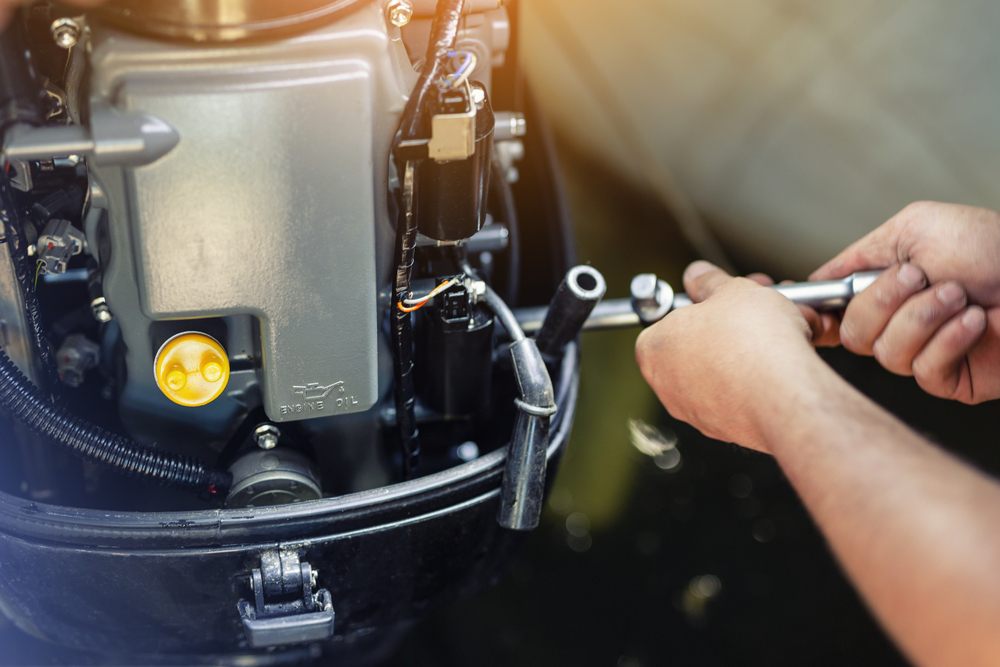
Owning a boat in Australia is a dream for many, but keeping it in top condition requires more than occasional cleaning or filling the tank. Hume Marine, a Sydney marine mechanic, has serviced everything from small Murray River runabouts to offshore cruisers along the Gold Coast. Over the years, we’ve seen how regular, thorough servicing can prevent expensive repairs, extend your boat’s lifespan, and most importantly, keep you safe on the water.
This guide walks you through what a professional marine mechanic checks during a boat service and why each inspection matters. Think of it as a roadmap to protecting your investment and your peace of mind, while enjoying Australia’s waterways.

A professional boat service goes far beyond changing oil or cleaning filters. It’s about making sure every critical system is ready for safe, reliable performance. Here’s a detailed look at what we inspect during a standard service at Hume Marine:
Your engine is the heart of your boat. Neglect it, and you risk poor performance, higher fuel consumption, or even complete engine failure. Here’s how we keep engines running smoothly:
Oil and Filter Changes
Fresh oil reduces friction, prevents corrosion, and protects internal components. Australian marine conditions—saltwater, heat, and long idle periods—accelerate oil degradation. We replace engine oil and filters at each service to keep your engine healthy, whether you’re cruising Sydney Harbour or exploring the Kimberley.
Fuel System Checks
Fuel lines, filters, and injectors are carefully inspected. Ethanol-blended fuels, common in Australian marinas, can harden lines or cause blockages. We replace filters, check injectors, and look for leaks or cracks—ensuring your engine burns fuel efficiently and reliably.
Cooling System Service
Overheating is one of the top causes of engine damage. Our technicians check raw water intakes for blockages, inspect impellers for wear, replace hoses, and test thermostats. In warmer regions like northern NSW or the Top End, this check is especially critical.
Belts, Pulleys, and Clamps
A snapped belt or loose clamp can leave you stranded mid-voyage. We inspect all belts for wear, check pulleys, and secure clamps to prevent surprises on the water.
Engine Diagnostics
Modern engines are complex, with onboard computers and sensors. Using diagnostic tools, we check engine codes, fuel-air mixture performance, and RPM consistency—catching minor issues before they become costly repairs.
Exhaust System Inspection
Saltwater exposure can corrode exhaust manifolds and risers. We check for leaks, cracks, and proper water flow, protecting your engine from overheating and structural damage.
Electrical faults might not be visible, but they can be dangerously disruptive. A dead battery, corroded connection, or faulty wiring can disable navigation, safety systems, or communications. Here’s what we do:
Battery Testing and Maintenance
We check voltage, capacity, and charging efficiency. Terminals are cleaned and coated with anti-corrosion gel—a must in saltwater environments to prevent shorts or slow power delivery.
Circuit and Wiring Inspection
Every cable is examined for frays, corrosion, or loose connections. Saltwater is highly conductive; a single fault can lead to shorts, blown fuses, or even fires.
Electronics and Navigation Systems
GPS units, VHF radios, depth finders, autopilot systems, and lighting are tested. A malfunctioning GPS at night or offshore is more than inconvenient—it can be hazardous.
Bilge Pumps and Alarms
Bilge pumps and float switches save lives. We test them under load and verify alarms trigger correctly to keep you afloat and alert in emergencies.
Fuse and Breaker Verification
Every protective device is checked to prevent overloads, safeguarding both electronics and passengers.
A smooth drive system isn’t just about speed—it’s about efficiency, safety, and engine health. Our checks include:
Propeller Inspection
Blades are checked for nicks, bends, or corrosion. Even minor damage can cause vibrations, reduce efficiency, and strain the engine. In busy areas like Sydney Harbour, debris strikes make this check essential.
Shaft and Coupling Checks
Misaligned drive shafts or worn couplings can reduce performance and cause premature wear. We inspect for alignment and condition to ensure a smooth ride.
Seal and Gearbox Maintenance
Outdrive and stern drive seals are examined for leaks, gear oil is replaced, and gearboxes are tested. Water ingress in drives accelerates corrosion, particularly in saltwater environments.
Lubrication of Moving Parts
Bearings, joints, and other moving parts are lubricated with marine-grade grease, reducing friction and extending their lifespan.
Operational Testing
Boats are sometimes run on test rigs or in shallow water to check handling, responsiveness, and vibration. This ensures predictable performance on every voyage.
Boat servicing is not a luxury, it’s an essential investment. Here’s why each inspection makes a difference:
Nothing spoils a day on the water faster than an unexpected breakdown. Regular servicing helps to:
Australian boating conditions—saltwater, intense UV and temperature swings which accelerates wear. Servicing helps you:
Skipping scheduled maintenance can void warranties. Major marine engine brands like Yamaha, Mercury, and Suzuki require documented servicing. Our checks:
Regular professional boat servicing is not optional; it’s essential for safety, reliability, and performance. At Hume Marine, we provide comprehensive services designed for the unique challenges of Australian waters. From engine diagnostics and electrical system checks to propeller inspections and drive system maintenance, our team ensures your boat is ready for every adventure.
Invest in your boat’s health today to enjoy stress-free, worry-free outings tomorrow. With a well-maintained vessel, you’ll spend more time enjoying the water and less time worrying about unexpected breakdowns.
